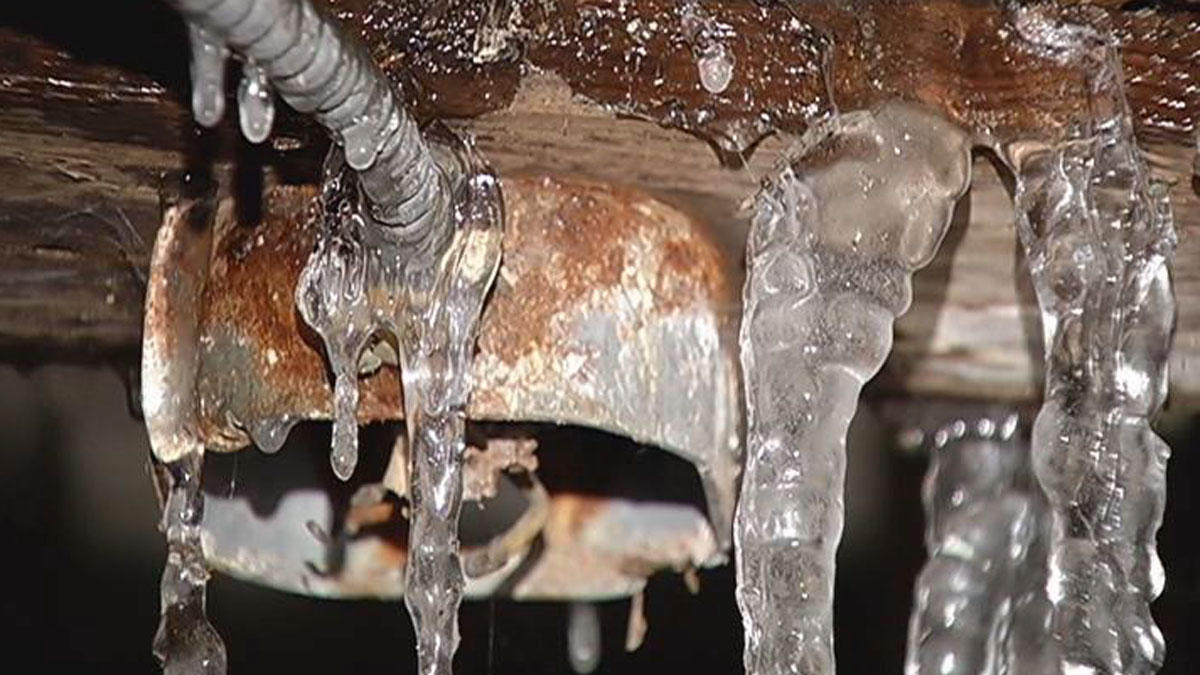Essential Tips to Prevent Frozen Plumbing in Winter: Professional Insights
Essential Tips to Prevent Frozen Plumbing in Winter: Professional Insights
Blog Article
They are making a number of good pointers related to Prevent Frozen Pipes as a whole in this content directly below.
:strip_icc()/snow-outdoor-faucet-pipes-4af65d1e5e904fb1aa7bf74071fe5d89.jpg)
Cold weather can ruin your plumbing, especially by freezing pipelines. Right here's how to avoid it from happening and what to do if it does.
Intro
As temperature levels decrease, the danger of frozen pipelines rises, potentially bring about costly repair work and water damage. Comprehending exactly how to avoid frozen pipes is crucial for homeowners in cool environments.
Avoidance Tips
Protecting susceptible pipes
Cover pipes in insulation sleeves or use warmth tape to secure them from freezing temperatures. Concentrate on pipes in unheated or exterior locations of the home.
Heating strategies
Keep indoor spaces adequately heated up, especially areas with pipes. Open closet doors to allow warm air to flow around pipes under sinks.
Exactly how to identify frozen pipelines
Look for reduced water circulation from faucets, uncommon odors or sounds from pipelines, and noticeable frost on exposed pipes.
Long-Term Solutions
Structural adjustments
Consider rerouting pipes away from exterior wall surfaces or unheated locations. Include added insulation to attic rooms, cellars, and crawl spaces.
Upgrading insulation
Purchase premium insulation for pipes, attics, and wall surfaces. Proper insulation helps preserve regular temperatures and decreases the danger of icy pipelines.
Protecting Outside Plumbing
Yard pipes and exterior faucets
Detach and drain pipes yard pipes prior to winter months. Set up frost-proof spigots or cover exterior faucets with insulated caps.
Recognizing Icy Pipelines
What triggers pipes to freeze?
Pipes freeze when subjected to temperature levels listed below 32 ° F (0 ° C) for extended durations. As water inside the pipes freezes, it expands, taxing the pipeline wall surfaces and potentially triggering them to rupture.
Risks and damages
Frozen pipelines can result in water system interruptions, residential property damages, and costly repair work. Burst pipes can flooding homes and create substantial structural damages.
Indications of Frozen Piping
Determining frozen pipelines early can avoid them from bursting.
What to Do If Your Pipelines Freeze
Immediate actions to take
If you believe frozen pipelines, keep taps available to alleviate pressure as the ice thaws. Utilize a hairdryer or towels taken in hot water to thaw pipelines gradually.
Conclusion
Avoiding frozen pipelines requires positive procedures and quick responses. By recognizing the reasons, signs, and preventive measures, home owners can protect their plumbing during cold weather.
5 Ways to Prevent Frozen Pipes
Drain Outdoor Faucets and Disconnect Hoses
First, close the shut-off valve that controls the flow of water in the pipe to your outdoor faucet. Then, head outside to disconnect and drain your hose and open the outdoor faucet to allow the water to completely drain out of the line. Turn off the faucet when done. Finally, head back to the shut-off valve and drain the remaining water inside the pipe into a bucket or container. Additionally, if you have a home irrigation system, you should consider hiring an expert to clear the system of water each year.
Insulate Pipes
One of the best and most cost-effective methods for preventing frozen water pipes is to wrap your pipes with insulation. This is especially important for areas in your home that aren’t exposed to heat, such as an attic. We suggest using foam sleeves, which can typically be found at your local hardware store.
Keep Heat Running at 65
Your pipes are located inside your walls, and the temperature there is much colder than the rest of the house. To prevent your pipes from freezing, The Insurance Information Institute suggests that you keep your home heated to at least 65 degrees, even when traveling. You may want to invest in smart devices that can keep an eye on the temperature in your home while you’re away.
Leave Water Dripping
Moving water — even a small trickle — can prevent ice from forming inside your pipes. When freezing temps are imminent, start a drip of water from all faucets that serve exposed pipes. Leaving a few faucets running will also help relieve pressure inside the pipes and help prevent a rupture if the water inside freezes.
Open Cupboard Doors
Warm your kitchen and bathroom pipes by opening cupboards and vanities. You should also leave your interior doors ajar to help warm air circulate evenly throughout your home.

We were shown that report on 6 Ways to Prevent Frozen Pipes from an acquaintance on our other web address. Sharing is good. You never know, you may be doing someone a favor. I cherish reading our article about How to prepare your home plumbing for winter weather.
Call Today Report this page